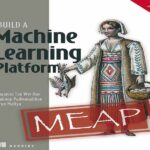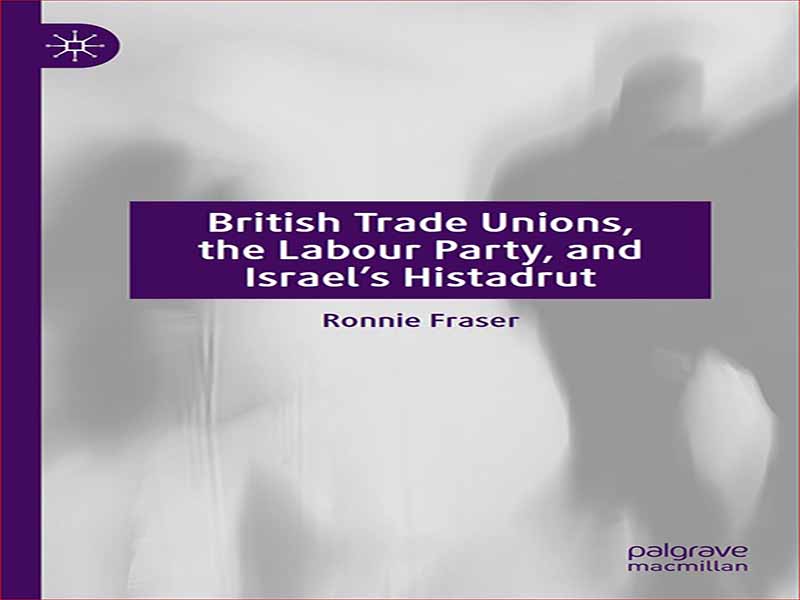- عنوان کتاب: British Trade Unions, the Labour Party, and Israel’s Histadrut
- نویسنده: Ronnie Fraser
- حوزه: بریتانیا
- سال انتشار: 2022
- تعداد صفحه: 330
- زبان اصلی: انگلیسی
- نوع فایل: pdf
- حجم فایل: 3.24 مگابایت
این داستان رابطه بین دو مرکز بینالمللی اتحادیه کارگری، کنگره اتحادیه کارگری بریتانیا (TUC) و هیستادروت اسرائیل است که برای اولین بار در دهه 1920 با یکدیگر تماس گرفتند. اما این روایت همچنین منعکس کننده نگرش جنبش کارگری بریتانیا نسبت به آزار و اذیت یهودیان، پناهندگان یهودی، یهودی ستیزی، صهیونیسم، حق یهودیان برای ایجاد سرزمین خود در فلسطین، دولت اسرائیل و درگیری اسرائیل و فلسطین است. از دهه 1960 به بعد، مناقشه اسرائیل و فلسطین به موضوعی به طور فزاینده ای مناقشه برانگیز و تفرقه انگیز برای اتحادیه های کارگری تبدیل شد و نگرش آنها در طول سال ها تغییر کرد و تبدیل به آنچه امروز می بینیم، انتقاد شدید از اسرائیل و حمایت از مسئله فلسطین شد. فلسطین که به عنوان سرزمینی بین دریای مدیترانه و رود اردن تعریف می شود، زادگاه یهودیت و مسیحیت بوده است. قبل از جنگ جهانی اول، فلسطین بخشی از امپراتوری ترکیه بود و بریتانیا از سوی جامعه ملل در کنفرانس سن رمو در سال 1920 حکمی برای فلسطین اعطا کرد. یهودیان از زمان کتاب مقدس در فلسطین زندگی می کردند و در دوران حکومت بریتانیا خود را فلسطینی می نامیدند. یهودیان برای جلوگیری از سردرگمی، اصطلاحاتی که از کلمه «فلسطین» استفاده میکنند، مانند جنبش کارگری فلسطین یا حزب کارگر فلسطین، به سازمانهای یهودی اطلاق میشود که در دوره قیمومت بریتانیا برای فلسطین وجود داشتند. هر دو TUC و هیستادروت اعضای اصلی جنبشهای کارگری ملی مربوطه خود هستند، اما این همان جایی است که شباهت به پایان میرسد. هیستادروت در سال 1920 توسط جنبش کارگری فلسطین با نقش دوگانه مراقبت از منافع کارگران یهودی فلسطین و یک نقش سیاسی با مسئولیت کلی برای پیشبرد صهیونیسم سیاسی، تأسیس یک میهن یهودی در فلسطین تأسیس شد. ساخت کشور بر همه مسائل مقدم باشد. در نتیجه هیستادروت هرگز یک نهاد سنتی اتحادیه کارگری به معنای اروپایی نبود، زیرا کارفرمایی بود که کار، خانه، آموزش، مراقبت های بهداشتی، حقوق بازنشستگی و رفاه را برای اعضای خود فراهم می کرد. در طول دوره فرمانروایی هیستادروت «دولت در انتظار» مسئول اداره جامعه یهودی، ییشوف، در فلسطین بود. در دهه 1970، این دومین کارفرمای بزرگ در اسرائیل پس از دولت بود. هیستادروت تنها در دهه 1990 بود که در آن زمان از منافع صنعتی و تجاری باقی مانده خود خلاص شد، که هیستادروت توانست تنها بر مسائل اصلی اتحادیه کارگری تمرکز کند.
This is the story of the relationship between two international trade union centres, the British Trade Union Congress (TUC) and the Israeli Histadrut, who first made contact with each other in the 1920s. But the narrative also reflects the attitudes of the British labour movement towards the persecution of the Jews, Jewish refugees, antisemitism, Zionism, the right of the Jews to establish their own homeland in Palestine, the State of Israel and the Israel-Palestine conflict. From the 1960s onwards the Israel-Palestine conflict has become an increasingly contentious and divisive issue for the trade unions, and their attitude has changed over the years to become what we see today, strong criticism of Israel and support for the issue of Palestine. Palestine, which is defined as the land between the Mediterranean Sea and the River Jordan, was the birthplace of Judaism and Christianity. Before the First World War Palestine was part of the Turkish Empire and Britain was granted a mandate for Palestine by the League of Nations at the San Remo Conference in 1920. Jews have lived in Palestine since biblical times and during the British mandate they called themselves Palestinian Jews. For the avoidance of confusion the terms using the word ‘Palestine’ such as the Palestine labour movement or the Palestine Labour Party refer to Jewish organisations which were in existence during the period of the British mandate for Palestine. Both the TUC and the Histadrut are key members of their respective national labour movements, but this is where the similarity ends. The Histadrut was established in 1920 by the Palestine labour movement with the dual role of looking after the interests of the Jewish workers of Palestine and a political role with overall responsibility for the advancement of political Zionism, the establishment of a Jewish homeland in Palestine, with the building of the country to take precedence over all other issues. As a result the Histadrut was never a traditional trade union body in the European sense as it was also an employer providing jobs, homes, education, healthcare, pensions and welfare for its members. During the mandate period the Histadrut was the ‘government in waiting’ responsible for running the Jewish community, the Yishuv, in Palestine. By the 1970s it was the second largest employer in Israel after the government. It was only in 1990s by, which time it had been divested of its remaining industrial and commercial interests, that the Histadrut was able to concentrate solely on core trade union matters.
این کتاب را میتوانید از لینک زیر بصورت رایگان دانلود کنید:
Download: British Trade Unions, the Labour Party, and Israel’s Histadrut



































نظرات کاربران